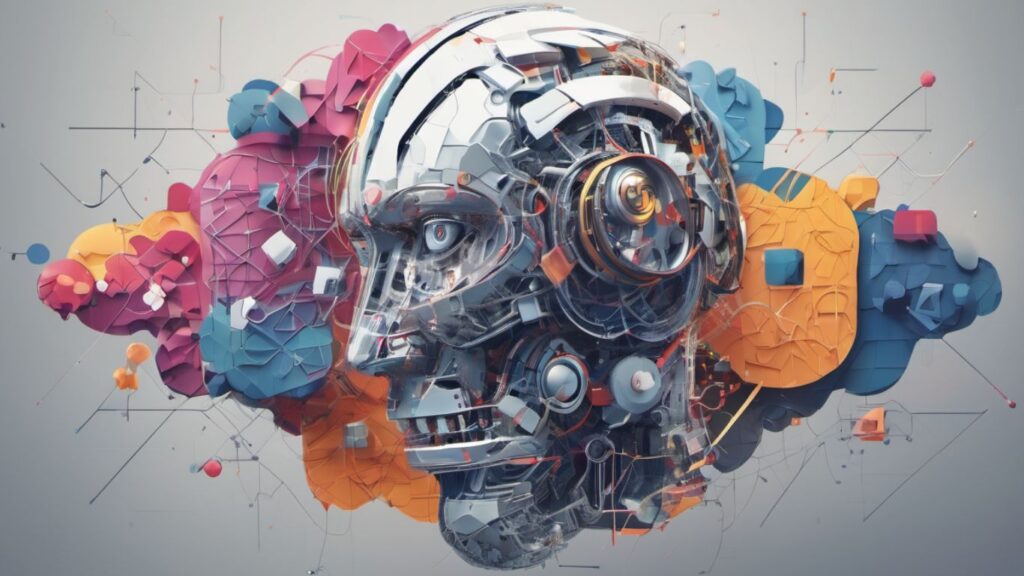Generative AI has recently seen a meteoric rise, revolutionizing how we create and consume media. By leveraging the power of advanced algorithms and vast datasets, generative AI can produce convincingly authentic content, ranging from text and audio to images and videos. In this article, we’ll explore the critical technologies behind generative AI, its use cases, challenges, and the ethical considerations that come with it.
Neural Networks in Generative AI
At the core of generative AI are neural networks, intense learning models designed to mimic the human brain’s structure and function. These models learn patterns from large datasets and generate new content based on this training. One of the most notable advancements in this field is the introduction of GPT-3.
GPT-3: Revolutionizing Text Generation
GPT-3 (Generative Pre-trained Transformer 3) is a language model developed by OpenAI that can generate human-like text. It understands context, making it capable of producing coherent and contextually relevant narratives. Its applications range from storytelling and news articles to chatbots and content creation.
GANs: Enhancing Authenticity in Media

Generative Adversarial Networks (GANs) have been pivotal in advancing the authenticity of AI-generated media. A GAN consists of two neural networks—the generator and the discriminator—which work in tandem to create realistic outputs.
How GANs Work
- Generator: Creates new data instances.
- Discriminator: Evaluates the authenticity of the generated instances.
By constantly challenging each other, these networks improve over time, resulting in high-quality images, videos, and audio that are difficult to distinguish from human-created content.
Transfer Learning for Realistic Outputs
Transfer learning allows AI models to leverage pre-existing knowledge from one domain to another. This technique reduces the data and computational power required to train models, making generative AI more accessible and efficient.
Applications in Media
- Text Generation: Enhances the quality and coherence of generated text.
- Visual Content: Improves the realism of images and videos by incorporating learned features from related tasks.
StyleGAN: Advancements in Visual Realism
StyleGAN, developed by NVIDIA, represents a significant leap in generative AI for creating visually stunning images. It allows for fine-grained control over the style and features of generated images, enabling the creation of photorealistic visuals.
Key Features
- Style Transfer: Combines elements from different images to create new, unique outputs.
- High Resolution: Produces images with exceptional clarity and detail.
Natural Language Processing for Text Generation

Natural Language Processing (NLP) is a crucial component of generative AI, enabling machines to understand and generate human language. With advancements in NLP, AI can now create text that is grammatically correct, contextually relevant, and engaging.
Use Cases
- Storytelling: Generates compelling narratives for books, articles, and scripts.
- Customer Service: Powers chatbots and virtual assistants for more natural and effective interactions.
- Content Creation: Assists writers in drafting articles, blogs, and social media posts.
Challenges in Creating Authentic Media
Ethical Considerations
- Bias and Fairness: Ensuring generated content is free from biases in the training data.
- Copyright and Plagiarism: Maintaining originality and adhering to intellectual property laws.
- Uncanny Valley: Overcoming the discomfort caused by media that appears almost, but not quite, human.
- Legal and Regulatory Issues: Navigating the complexities of laws surrounding AI-generated content, particularly in the case of deepfakes.
Ensuring Responsible Use
- Guidelines and Oversight: Implementing strict guidelines for training data to avoid harmful biases.
- Transparency: Developing explainable AI models that allow users to understand how decisions are made.
- Content Moderation: Integrating mechanisms to detect and mitigate harmful or unethical content.
Technical Advancements in Generative AI
Enhanced Training Algorithms
Improvements in training algorithms and more prominent, diverse datasets have significantly boosted the accuracy and efficiency of generative AI models. These advancements allow for more realistic media creation across various formats.
Reinforcement Learning
Reinforcement learning enables AI to learn from a system of rewards and punishments, enhancing its ability to create content that meets specific criteria or objectives.
Advanced Hardware
Using powerful GPUs and TPUs has accelerated generative AI training and inference processes, making it more accessible and efficient for a broader range of applications.
FAQs
What is Generative AI?
Generative AI is the subset of artificial intelligence that focuses on creating new content. This can include text, images, audio, and video. Using advanced algorithms and large datasets, generative AI models learn patterns and generate outputs often indistinguishable from human-made content.

How does GPT-3 generate text?
GPT-3 generates text using a neural network architecture known as a Transformer. It has been pre-trained on vast text data to understand and generate human-like text. When given a prompt, GPT-3 can produce coherent and contextually appropriate responses by predicting the next word in a sequence.
What are GANs, and how do they work?
Generative Adversarial Networks (GANs) are a type of AI model consisting of two neural networks: a generator and a discriminator. The generator creates new data instances while the discriminator evaluates them for authenticity. These networks train together, continuously improving the realism of the generated outputs.
What is transfer learning?
Transfer learning is a technique in machine learning where a model developed for one task is reused as the starting point for a model on a second task. This approach leverages pre-existing knowledge, reducing the data and computational power needed for training.
What are the key ethical considerations in generative AI?
Vital ethical considerations in generative AI include:
- She was addressing bias and fairness.
- We are ensuring originality to avoid copyright and plagiarism issues.
- It is overcoming the uncanny valley effect.
- We are navigating legal and regulatory frameworks, especially about deepfakes.
How is generative AI used in media?
Generative AI is used in media for various applications such as text generation, creating visual content, enhancing storytelling, and powering chatbots and virtual assistants. It assists in drafting articles, producing high-quality images and videos, and generating compelling narratives.
What challenges exist in creating authentic AI-generated media?
Challenges include:
- We are ensuring ethical usage.
- I am avoiding biases in generated content.
- We are maintaining originality.
- We are providing transparency in AI models.
- We integrate content moderation mechanisms to detect and mitigate harmful or unethical content.
Additionally, overcoming the uncanny valley effect and complying with legal regulations are significant challenges.
How have advancements in hardware contributed to generative AI?
Advancements in hardware, such as powerful GPUs and TPUs, have significantly accelerated generative AI training and inference processes. This has made AI more accessible and efficient, enabling more realistic and high-quality media creation across various formats.
Conclusion: The Future of Authentic AI Media
Generative AI has already made significant strides in creating convincingly authentic media, and its potential continues to grow. By addressing ethical considerations and leveraging technological advancements, generative AI can become crucial for efficiency, data management, and gaining a competitive advantage in business.
Ready to explore the capabilities of generative AI for your business? Sign up for Jasper today and see how AI can transform your operations.











